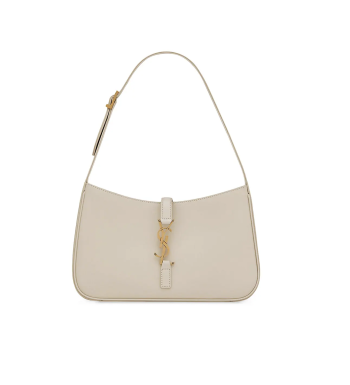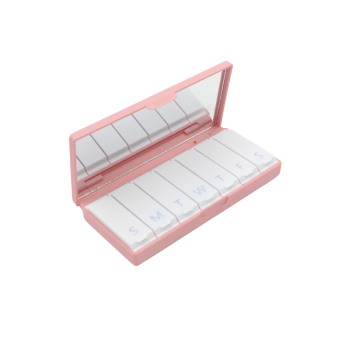In today’s digital landscape, blogging has become a dynamic platform for connecting with an audience and sharing valuable and exciting content. The key to a successful blog lies in consistently delivering content that is not only engaging and relevant but also strategically planned. However, achieving this can be a real challenge! It’s not quite as easy as you might think. The task of constantly producing high-quality content can be daunting. But it doesn’t have to be! This is where a blog content calendar comes into play.
A blog content calendar is a tool that can alleviate the stress of content planning and development if you use it in a way that is consistent and helpful to you. Having a blog content calendar can remove the feeling of “impending doom”, and instead, ensure a steady flow of impactful posts throughout the year. In this post, my hope is to help you create an efficient and effective blog content calendar that will work for you. As a full-time blogger, I’m here to be a resource and demystify the process of organizing your blogging efforts for maximum impact!

If you’re looking for more content creator tips, I have more free resources for you here! If you’re ready to level up your business, check out my course The Profitable Influencer.
How To Create a Blog Content Calendar
The benefits of having a blog content calendar are endless. However, one of the biggest benefits is that a blog content calendar can transform the overwhelming task of consistent content creation into a streamlined process. By mapping out your topics, schedules, and themes in advance, you will regain control over your blogging journey.
The best part? Creating a blog content calendar for yourself is simpler than you might think! With just a few straightforward steps, you’ll find yourself equipped to manage your blog content with ease and confidence.

What Is a Content Calendar
At its core, a content calendar is a strategic roadmap for sharing valuable information with an audience. It’s a visual tool that lays out what you’ll create, when you’ll publish it, and where it will be shared.
While a content calendar is commonly associated with blogging, this type of tool is a versatile asset that extends its benefits to diverse platforms. Whether you’re planning blog posts, social media updates, YouTube videos, or a combination of different platforms, this tool ensures a consistent flow of content that resonates with your audience.
What sets a blog content calendar apart is its focus on crafting in-depth narratives, fostering engagement, and guiding your audience through a more immersive experience – characteristics that make your content truly unique.

How To Create A Content Calendar For Blogs
Define Your Goals and Audience
Start by clarifying your blogging goals and understanding your target audience. What are you trying to achieve with your blog? Who is your ideal reader? How can you serve your audience? This foundation is imperative and will shape the type of content you’ll create and the tone you’ll adopt.
Outline Key Topics and Themes
Brainstorm a list of key topics and themes that align with your goals and resonate with your audience. These can be broad areas that your blog will cover or specific topics that you will dive into. For example, if you’re running a fitness blog, your topics might include nutrition tips, workout routines, and wellness advice. If you’re running a cooking blog, your topics might include recipes, cooking methods, and meal-planning tips.
Determine Posting Frequency
Decide how often you’ll publish new content. It’s true that posting consistently is key, but it’s important to be realistic about what you can manage. Whether you’re posting daily, weekly, or bi-monthly, establish a schedule that you can maintain over the long term so that your audience knows what to expect.
Create a Calendar Format
Choose a format for your content calendar that works best for you. Make sure that the tool you decide to go with is a realistic choice for you, meaning that you will reference it often, and not simply have it as something “nice to have”. You could use a digital tool like Google Calendar or spreadsheet software, or even opt for a physical planner if you’re someone who likes to strike pen to paper. Divide the calendar into weeks or months, and allocate specific topics or themes to each slot.
Plan and Schedule Content
With your calendar framework in place, start populating it with specific content ideas, headlines, and publishing dates. As you go, consider seasonality, holidays, and any relevant industry events. Leave room for flexibility, allowing space for timely or unexpected topics that might arise.
Repurpose and Recycle Content
Don’t feel like every piece of content needs to be entirely new. Challenge yourself to repurpose and recycle your existing content in creative ways. This will save you so much time, and allow you to get the biggest bang for your “buck” on content that you spent a lot of time and brainpower on! For example, you could transform a popular blog post into a video or break down an in-depth post into a series of social media posts. This not only saves you time but also ensures that your best content reaches different segments of your audience.

Allocate Time for Research and Creativity
Set aside dedicated time for research and brainstorming when it comes to your area(s) of expertise. In order to stand out and continue to serve your audience as a resource, research new trends, industry updates, and reader preferences to ensure your content remains fresh and relevant. Additionally, allow time and space in your schedule for creative thinking. Sometimes, the best ideas emerge when you step away from the routine and explore new avenues.
Batch Your Content Creation
Consider batching your content creation process. Dedicate specific blocks of time to write multiple blog posts in one go. This approach can boost your efficiency by allowing you to immerse yourself in a particular mindset and streamline your writing process. Once your content is ready, you can then schedule it according to your content calendar.
Include Promotion and Engagement Strategies
A content calendar shouldn’t only focus on publishing dates, but it should also encompass your promotion and engagement strategies. Allocate time to plan how you’ll share your content on various platforms, such as social media, emails, and relevant online communities. Interaction with your audience, responding to comments, and engaging in discussions should also be integrated into your schedule.
Monitor and Analyze Performance
Regularly track the performance of your published content, but set aside time to do so. It’s easy to swing one way or the other – never checking in on your performance, or checking in too often. It’s helpful to keep an eye on metrics like page views, engagement, social shares, and comments, but put time blocks for this in your calendar. This data provides insights into what type of content resonates with your audience. Use these insights to refine your future content calendar, focusing on topics and formats that consistently deliver results.
Allow Room for Flexibility
While having a content calendar provides structure, it’s essential to maintain flexibility. Current events, emerging trends, or unexpected developments might require you to adjust your content plan. Also, receiving certain promotions or ad opportunities may also mean that you need to be flexible as well, and those are exciting opportunities! Leave open slots in your calendar for “hot topics” or time-sensitive content that you can seamlessly incorporate when needed.
Bonus Tip
As you develop content, consider including information about keywords, target word count, and any related elements such as images, videos, etc. This approach ensures that your content calendar serves as a comprehensive guide for your entire content creation process.
And as a bonus to the bonus tip – do you feel stuck in the process of creating a blog name?
Blog Content Calendar Template
Looking for a tool to help you get started? I have a freebie for you! I’m sharing my very own content planning template with you that I use to plan out my own content. Use this freebie as a guide to help you get started in creating your own blog content calendar that will help you achieve your goals and accomplish your blogging dreams!

So, are you ready to create a blog content calendar that works for you and your content? The sooner you get organized, the sooner you will be able to strategically plan out your content and content creation. And in no time, you’ll start to feel less stressed and more prepared to tackle your goals!
What was your favorite tip from this post about blog content calendars? Let me know in the comments!





































































































Leave a comment